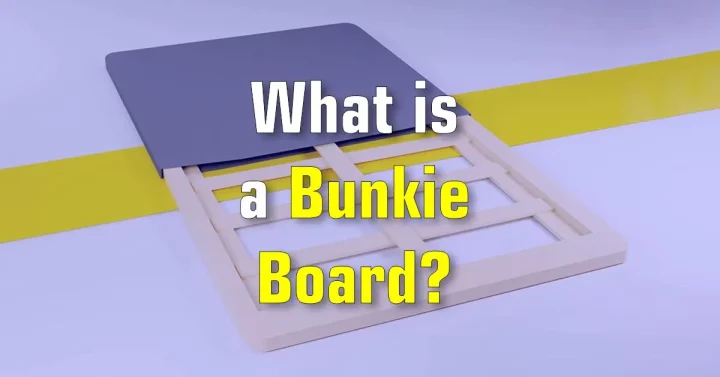
A Bunkie board is a flat piece of wood or particleboard placed on top of a bed’s slats or box springs.
It provides a solid surface for your mattress, preventing it from sagging or sinking between the slats.
Typically 1-3 inches thick, Bunkie boards are available in various sizes to match bed frames. This guide will explain everything you need to know about Bunkie Boards.
Pros and Cons of Bunkie Boards
Pros:
There are several reasons why you might want to consider adding a Bunkie board to your bed setup:
- Better Support: Provides a solid, uniform surface, which can help improve its support and extend its lifespan.
- Improved Comfort: You’ll experience fewer lumps and bumps in your mattress, leading to a more comfortable sleeping surface.
- Space-saving: Bunkie boards are frequently used instead of conventional box springs, saving you valuable bedroom space.
- Compatibility: This can help bridge the gap and provide a stable base for your mattress.
- Affordable: These are often less expensive than traditional box springs for improving support and comfort.
Cons:
- Limited Thickness Options: Bunkie boards are typically only available in a few thickness options.
- Limited Cushioning: While they can improve the support and comfort of your mattress, they don’t provide the same level of cushioning as a traditional box spring.
- Less Height: Bunkie boards are typically only a few inches thick, making your bedsit lower to the ground than a traditional box spring would.
What are the Different Types of Bunkie Boards?
There are several different types of Bunkie boards available, including:
- Wooden Bunkie Boards: These are the most sturdy and long-lasting option because they are constructed from solid wood like pine or poplar.
- Particleboard Bunkie Boards: These are less expensive than wooden Bunkie boards and are produced from compressed wood particles. However, they may not last as long or provide as much support.
- Upholstered Bunkie Boards: These give your mattress more comfort and protection by being wrapped in fabric or faux leather.
Conclusion
In conclusion, a Bunkie board can be an excellent investment for anyone looking to improve the support and comfort of their mattress and avoid sagging.
Whether you’re looking to save space in a small bedroom or provide a more stable base for your mattress, a Bunkie board is a versatile and practical accessory that can help you get a better night’s sleep.
So why wait? Invest in a Bunkie board today and start sleeping better tonight!
